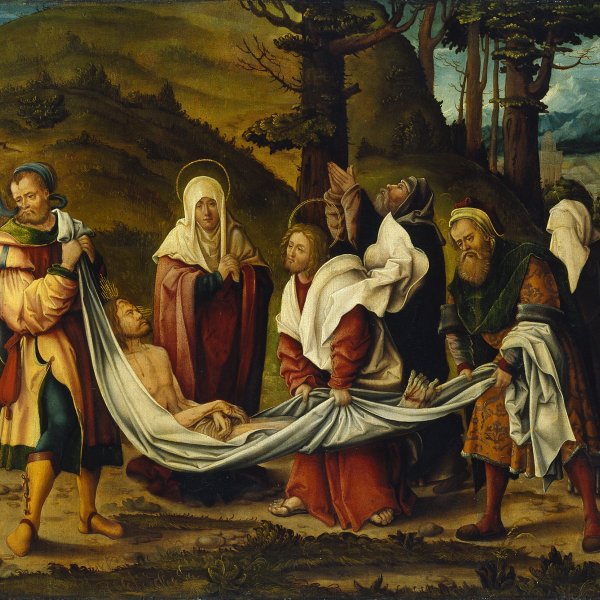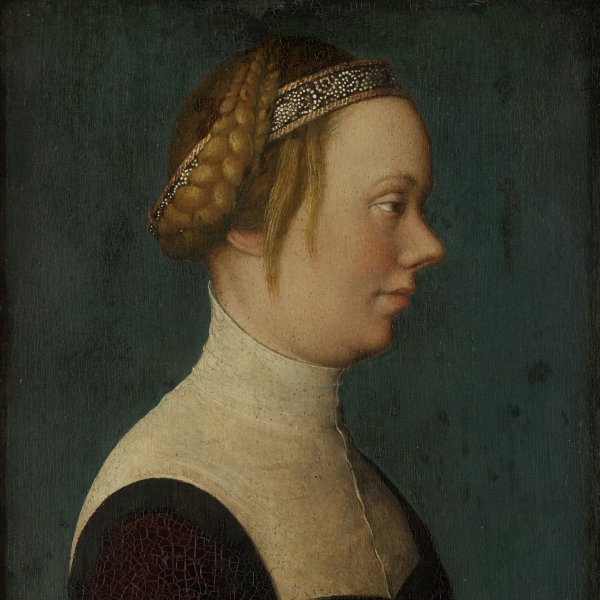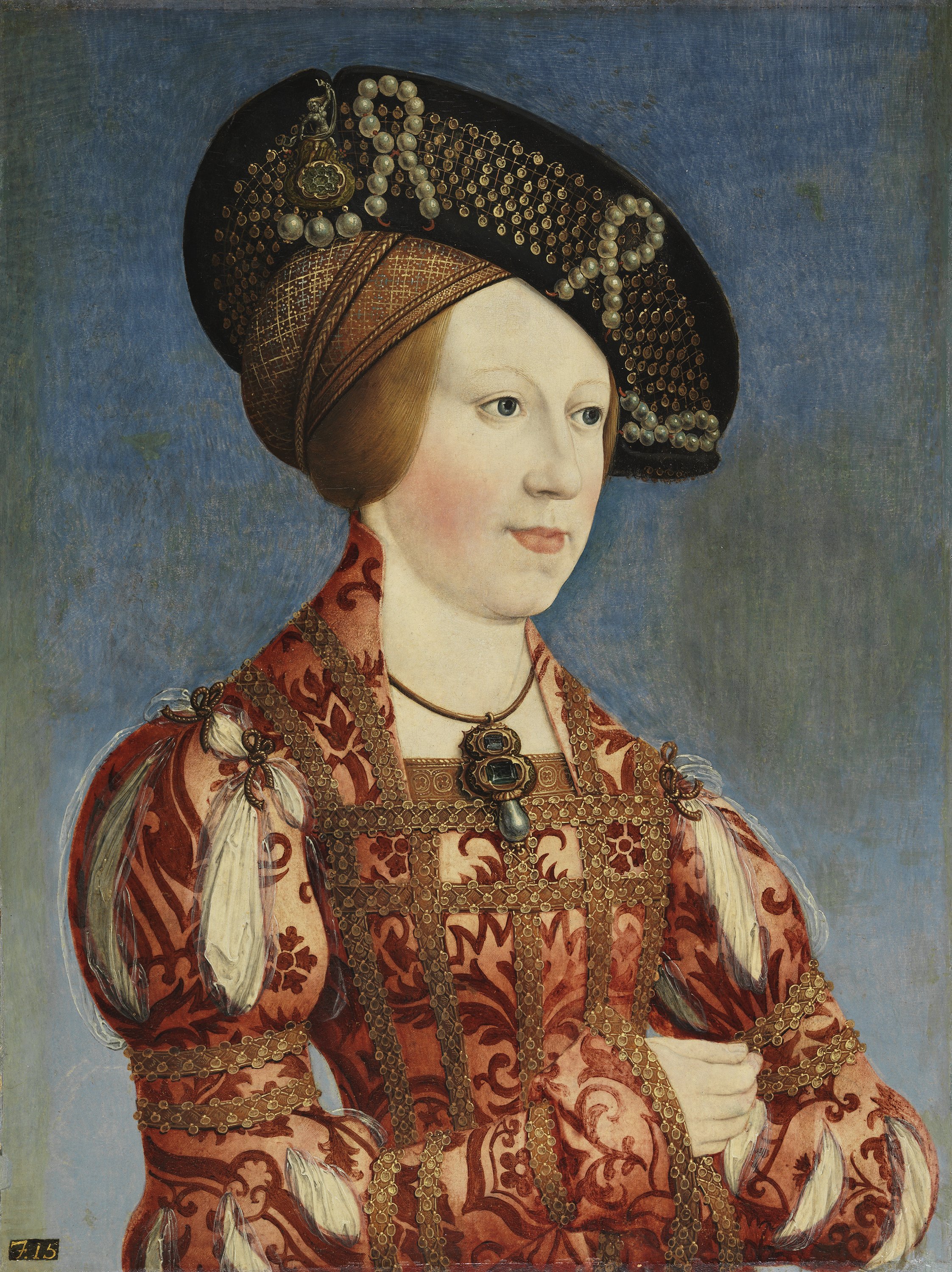Portrait of Anne of Hungary and Bohemia
Oil on panel.
44 x 33.3 cm
Museo Nacional Thyssen-Bornemisza, Madrid
Inv. no.
275
(1937.2
)
ROOM 9
Level 2
Permanent Collection
There are still numerous gaps regarding our knowledge of Hans Maler’s early activity. His place of birth, Ulm, is known from an inscription on the reverse of a portrait, while the first document in which he is mentioned relates to a period of stay in the city of Schwaz in 1517. Portraiture occupied a leading position within his output and it is clear that he was influenced by two leading German artists. One of them, who most obviously influenced his early work, is Bartholomäus Zeitblom, and Maler may have trained with him or with an artist of Zeitblom’s circle. The other is Bernhard Strigel, who was particularly influential for Maler’s court portraits. In addition to members of the court at Innsbruck (particularly the
Archduke Ferdinand), Maler’s clients and models included influential and wealthy families such as the Fugger, and prosperous merchants.
The present panel has not retained its original support. It was in the Barberini collection until 1934 and was recorded in the 1671 inventory of that collection as a German woman in a pink dress, and in the 1686 inventory in which it is attributed to Lucas van Leyden. The panel was with the Mercuria gallery in Lucerne in 1937, entering the Thyssen-Bornemisza collection that year. The panel has a number relating to an old Barberini inventory at the lower left corner.
Anne, daughter of Wladislav, King of Hungary and Bohemia, was born in Prague in 1503. In 1520 she was betrothed to the Archduke Ferdinand in Innsbruck and the marriage took place the following year in Linz. After the death of her brother Louis II at the battle of Mohac, Anne and Ferdinand inherited the crown of Bohemia and Hungary. She died in Prague in 1547.
Maler painted the Queen’s portrait on various occasions and the present panel is among the most successful of these images, using a type of presentation to be found in other portraits by his hand. Anne is depicted half-length against a light blue background, whose lower part is more illuminated. The precise brushstroke is used to convey the luxurious details of her hat, dress and jewels. An infrared reflectograph has revealed a significant compositional modification that explains the curious position of her left hand as Maler originally drew her holding a rose (as the underdrawing shows) but this was not finally painted. Other portraits of Anne are to be found in the Gemäldegalerie in Berlin, in which she also wears a hat with various brooches and a feather, and in the Landesmuseum Ferdinandeum in Innsbruck in which she wears a fine jewel at her neck with the motif of a small owl. The present panel was the basis for two prints: one by Hans Weiditz, of which there is an impression in the Berlin Kupferstichkabinett, and another, attributed to Erhard Schön of 1519 in which the Queen, presented bust-length, is framed by a Renaissance architectural setting. The inscription on the latter print has enabled this portrait to be dated.
Mar Borobia
The present panel has not retained its original support. It was in the Barberini collection until 1934 and was recorded in the 1671 inventory of that collection as a German woman in a pink dress, and in the 1686 inventory in which it is attributed to Lucas van Leyden. The panel was with the Mercuria gallery in Lucerne in 1937, entering the Thyssen-Bornemisza collection that year. The panel has a number relating to an old Barberini inventory at the lower left corner.
Anne, daughter of Wladislav, King of Hungary and Bohemia, was born in Prague in 1503. In 1520 she was betrothed to the Archduke Ferdinand in Innsbruck and the marriage took place the following year in Linz. After the death of her brother Louis II at the battle of Mohac, Anne and Ferdinand inherited the crown of Bohemia and Hungary. She died in Prague in 1547.
Maler painted the Queen’s portrait on various occasions and the present panel is among the most successful of these images, using a type of presentation to be found in other portraits by his hand. Anne is depicted half-length against a light blue background, whose lower part is more illuminated. The precise brushstroke is used to convey the luxurious details of her hat, dress and jewels. An infrared reflectograph has revealed a significant compositional modification that explains the curious position of her left hand as Maler originally drew her holding a rose (as the underdrawing shows) but this was not finally painted. Other portraits of Anne are to be found in the Gemäldegalerie in Berlin, in which she also wears a hat with various brooches and a feather, and in the Landesmuseum Ferdinandeum in Innsbruck in which she wears a fine jewel at her neck with the motif of a small owl. The present panel was the basis for two prints: one by Hans Weiditz, of which there is an impression in the Berlin Kupferstichkabinett, and another, attributed to Erhard Schön of 1519 in which the Queen, presented bust-length, is framed by a Renaissance architectural setting. The inscription on the latter print has enabled this portrait to be dated.
Mar Borobia









